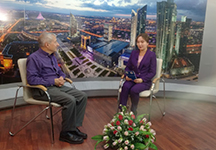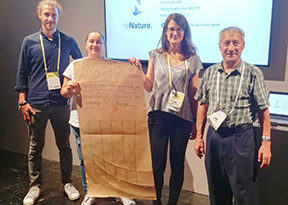
Eric Freedman interview on student TV station at East Kazakhstan State University
Knight Center director Eric Freedman spoke recently at an anti-corruption forum held at East Kazakhstan State University. The forum coincided with his two-week stint as a guest lecturer to journalism and language students at the university in Oskemen, Kazakhstan.
Freedman and MSU Journalism School alum Jim Mitzelfeld won a 1994 Pulitzer Prize for their coverage of a corruption scandal in the Michigan Legislature as reporters in the Detroit News Lansing Bureau.
Here are Freedman’s remarks at the forum:
No society is free of corruption, and that is unfortunately true of the United States as well. Speaking as a journalist, a professor and a citizen, I worry about 3 major types of corruption in our society.



